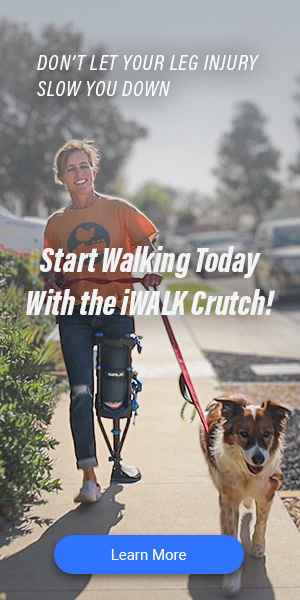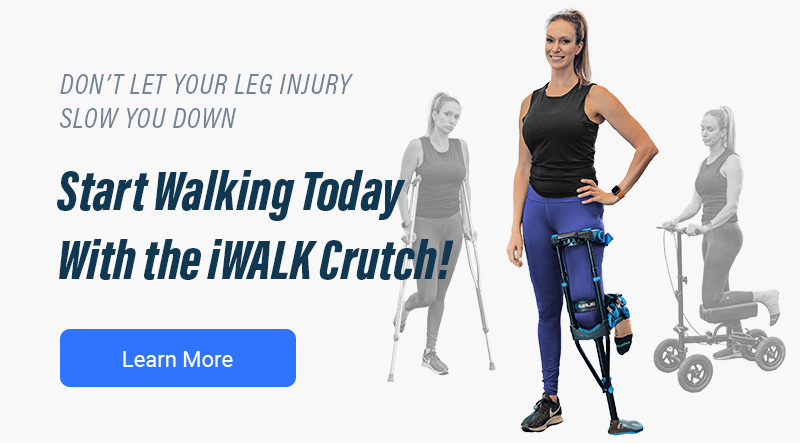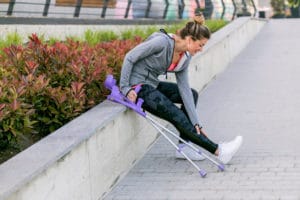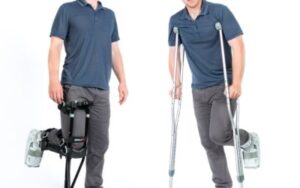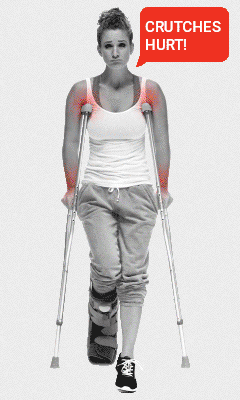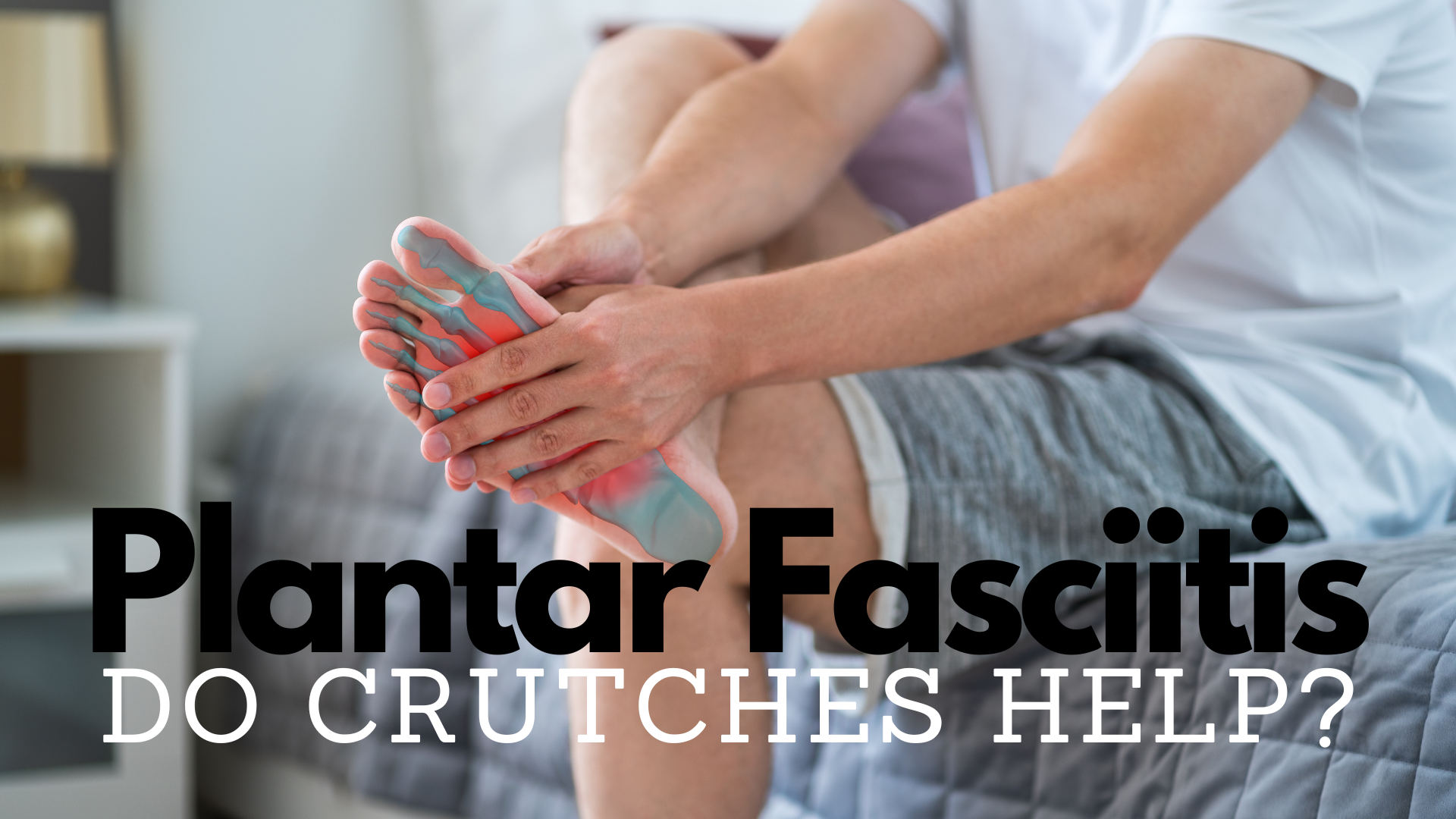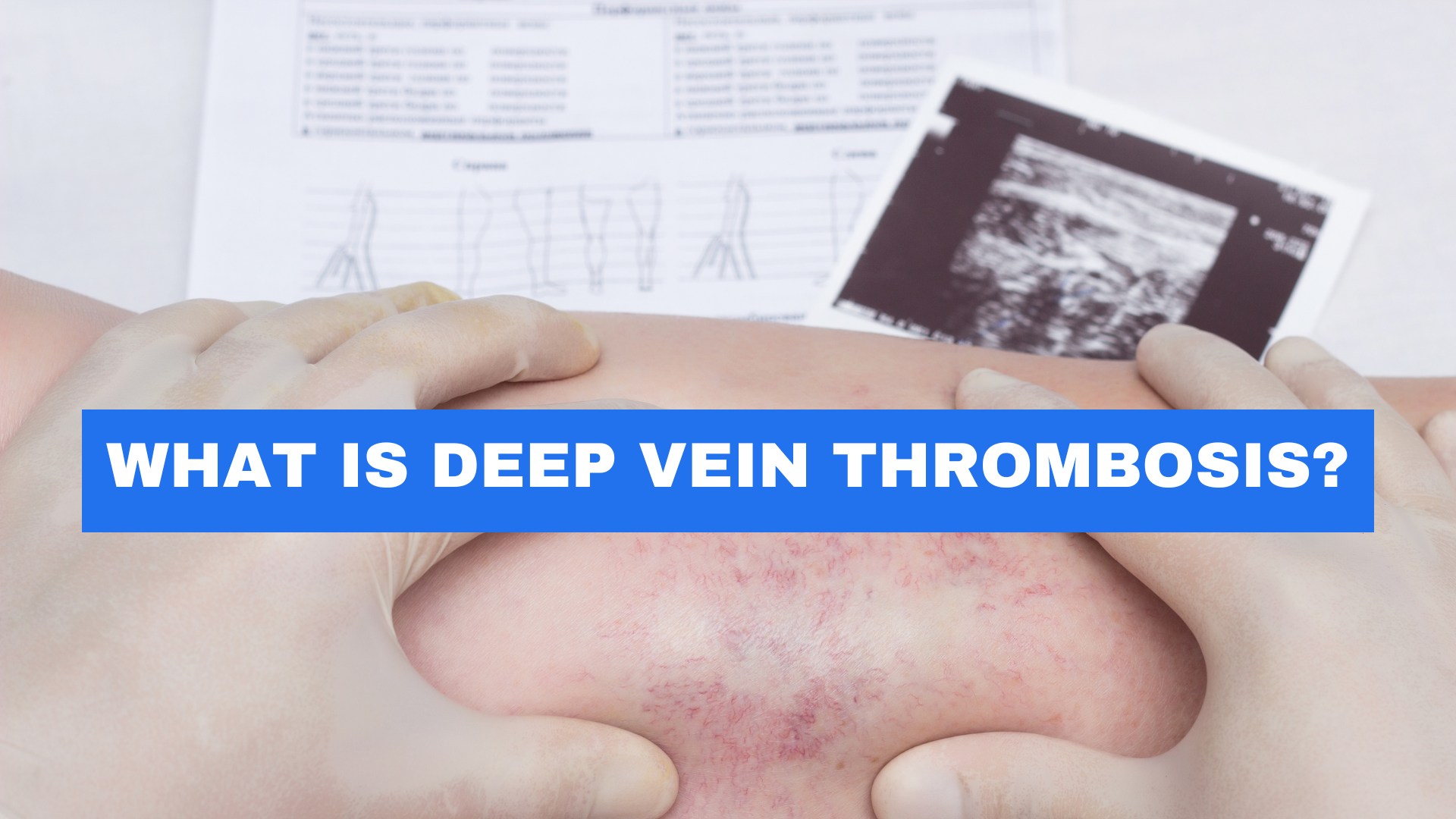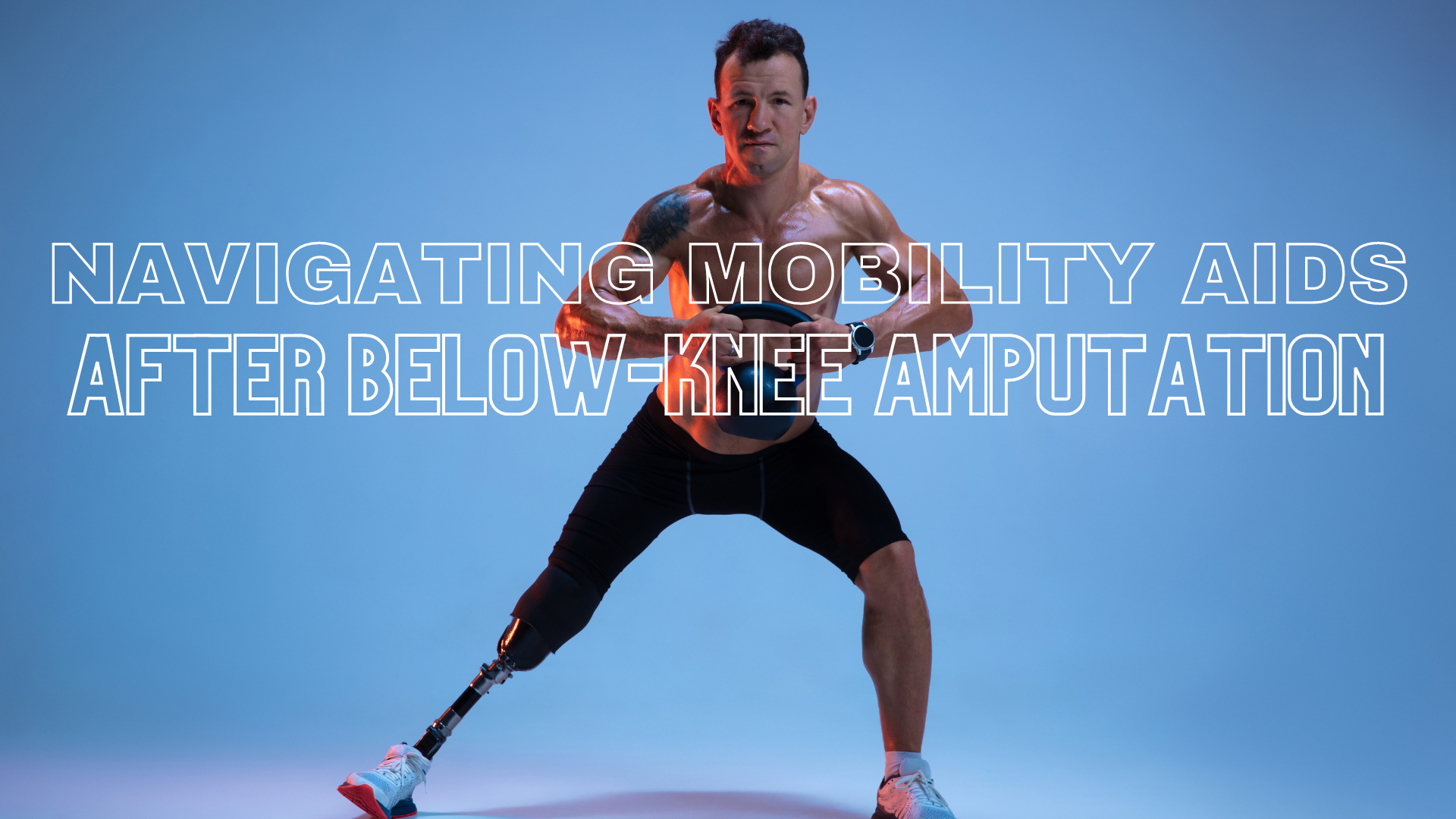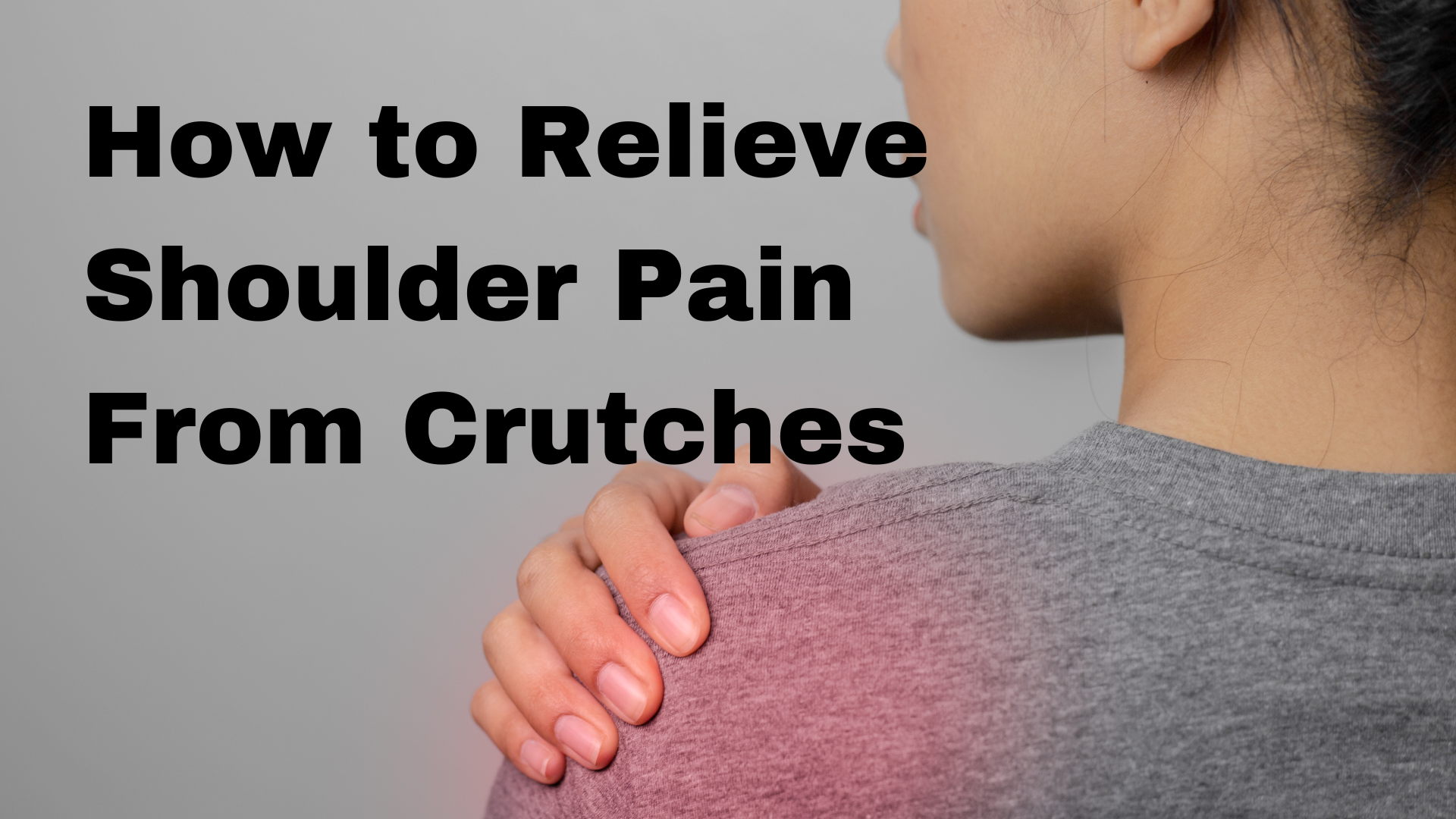Knowing You Have Weeks or Months Left on Them Isn’t Encouraging, but Thankfully, There Are Ways to Make Your Crutches More Bearable While You Recover
Knowing you have weeks or months left on them isn’t encouraging, but thankfully, there are ways to make your crutches more bearable while you recover. If you’re facing down several more weeks or months on crutches, take some time to learn how to cushion your crutches to make them more comfortable or consider how a crutch alternative might reduce or eliminate your pain while you recover.
Learn How to Cushion Crutches
There are several easy methods for making your crutches more comfortable, including learning how to cushion them, using cushioning grips, properly using and adjusting your crutches, and even finding a more comfortable alternative.
1. Add Cushioning
Crutches don’t offer much in the way of cushioning, so learning how to cushion your crutches is one of the best places to start when it comes to making them more comfortable.
You don’t have to look far to find some good padding. The easiest way to add cushioning simply involves some old towels and duct tape. You can use any type of fabric, as long as it will provide cushioning and make your crutches more comfortable.
Simply fold your old towel (or blanket) so it’s just wider than the top cushion of your crutch. Wrap the fabric around the top of the crutch and secure it with duct tape. Make sure your padding doesn’t shift or roll while you use your crutches. If your padding moves, it can increase your risk of falling or cause additional discomfort.
Alternatively, you can add padding underneath some crutch cushions. Fabric or padding can be stuffed under your existing cushion to make it more comfortable. If your crutch cushion won’t allow you to add padding or your DIY fabric cushion keeps shifting, consider investing in some commercial crutch pads or a crutch alternative.
2. Add Padding to the Grip
Crutches aren’t just potentially painful for your arms, they also make your hands tired and sore because you place a lot of weight on your hands while you get around. Adding additional padding or grip to your crutch grips can make it easier on your hands.
You can employ the same technique as cushioning your crutches by using rolled-up fabric and duct tape on the grips. However, if the padding rolls or moves, it can make your crutches dangerous to use and increase your risk of falling. The best way to cushion this area is to purchase crutch grips that won’t shift around, which reduces the impact on your hands.
3. Properly Adjust Your Crutches
Even if you know how to cushion your crutches, they can still be painful if they aren’t properly adjusted to your body. Crutch pads that are too tall will dig into your armpits and ones that are too short will affect your posture. Even if you purchase crutches that are suitable for your height range, they may not be adjusted for you.
Properly fitting crutches should not dig into your armpits. To adjust your crutches, place the foot of the crutch a few inches in front of your feet. In this position, the crutch pads should hit about two inches below your armpits.
Once you’ve adjusted the crutch height, check the grips. With the tops of your crutch about two inches below your armpits, your elbows should have a slight bend and wrists should be straight and aligned with your hips. Adjust your grips accordingly for the correct fit.
For hands-free crutches like the iWALK2.0, you’ll need to adjust the height, leg straps, and angle of your mobility device to get the perfect fit.
Fortunately…
With a hands-free crutch, there’s no need to worry about underarm or hand pain.
4. Use Your Crutches Correctly
The quickest way to experience pain while using crutches is to use them improperly.
Proper use of your crutches will keep both your good and injured leg protected from damage. If you’re experiencing wrist or hand pain, it can mean you’re putting too much of your weight on your hands. Make sure your elbow has a slight bend and you’re not bending your wrists. Bent wrists are more susceptible to pain or injury.
To walk correctly with crutches, start by standing on your good leg. Swing your legs forward, landing on your good leg, then move your crutches slightly ahead of you and continue this motion to get around. Make sure you keep your knees slightly bent to prevent excessive impact on your joints.
Hands-free crutches like the iWALK2.0 require a little practice but allow you to maintain the same gait that you would normally have on two legs.
5. Choose A Crutch Alternative
The truth is, no matter how much you’ve learned about how to cushion your crutches or adjust them, they will never be perfectly comfortable to use. If you just can’t get your crutches to work for you, it may be time to consider a crutch alternative. Here are some common alternatives you might consider if regular crutches leave you in pain.
- Hands-Free Crutch: Also referred to as a peg-leg crutch, these crutches allow you to get around comfortably and retain full mobility. The iWALK2.0 is an excellent hands-free crutch with a custom fit so you can get around comfortably. These types of crutches are suitable if you have an injury below the knee.
- Knee Scooter: Similar to a hands-free crutch, knee scooters are a good option if you have an injury below the knee. They allow you to get around quickly but require you to use your hands to steer and can be difficult to use on uneven surfaces.
- Wheelchair: Another great option that provides comfort is a wheelchair. You will need to use your hands to get around, but it will keep you completely off your feet and won’t cause discomfort when getting around. The downside is you will need to make sure anywhere you go has wheelchair access, and getting your wheelchair in your car may present difficulties.
Find the Right Mobility Device
Learning how to cushion crutches can help make your time in recovery more bearable, but sometimes no amount of cushioning can make up for how uncomfortable crutches are.
Take time to rest so you aren’t constantly on your crutches, or find an alternative to crutches that can help make your recovery easier. Compare mobility devices and find out which mobility device is best for your needs. find out which mobility device is best for your needs.
You Might Also Like:
Common Problems with Crutches and What to Do About Them
Common problems when using crutchs include shoulder, rib, and hand pain. Find out about how to deal with these issues, plus how to prevent sore armpits.
What to Put on Crutches for Comfort [6 Effective Options]
If you’ve ever been on crutches you know how painful it can be. Learn what to put on crutches for comfort and make your recovery time bearable.

